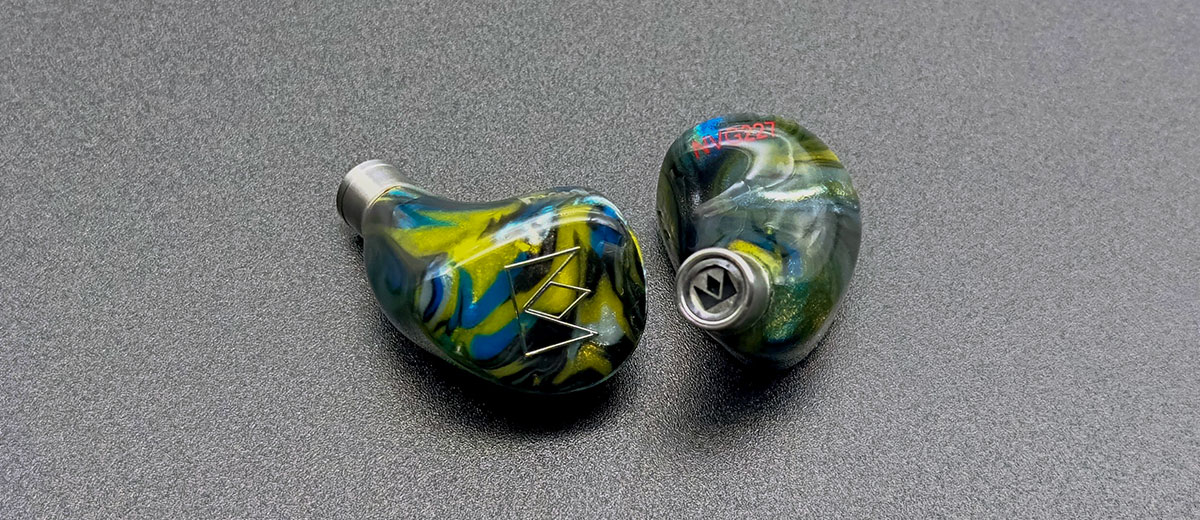Blog
Noble Audio Van Gogh Review — Headfonics

Nihal reviews the Noble Audio Van Gogh, a new hybrid 8mm dynamic and triple BA IEM, tuned with a ‘musical slant’ and currently priced at $699.
Disclaimer: This sample was sent to me in exchange for my honest opinion. Headfonics is an independent website with no affiliate links or status. I thank Noble Audio for their support.
Click here to read more about the Noble Audio products previously featured on Headfonics.
This article follows our latest scoring guidelines, which you can read in more detail here.
There are a few reasons why Noble Audio is one of the most recognized brands in the audiophile community. One, they build products that range from very affordable to high-end, allowing people to choose across all price segments.
The second important thing is that they get their tuning right most of the time. I believe they are one of the most sought-after brands, and their consistency has a lot to do with it.
I own a Kublai Khan, which remains one of my regulars even to this day, and I’ve always looked for opportunities to try their IEMs.
To be honest, I’m a fanboy myself. What makes me love them even more is their appetite for experimentation, as their tunings offer a lot of variety, and there’s something for everyone in their lineup.
Recently, they released the $699 Van Gogh, a mid-fi IEM that you may have seen making rounds due to its looks. I was quite excited myself when it was released.
In this review, I’ll find out if the tuning complements its attractive appearance. I’ll also compare it with a few similarly priced IEMs, such as the Softears RSV-MKII and the THIEAUDIO Oracle MKIII, to see how competitive it is.


Features
The Van Gogh features a humble four-driver setup, with one dynamic driver and three balanced armature drivers on each side.
Specifically, it uses an 8 mm dynamic driver with a magnesium-aluminum diaphragm and a dual-magnetic circuit for the low end, two Sonion E-Series balanced armature drivers for the midrange, and a Knowles RAD-Series balanced armature driver handling the ultra-highs.
With a sensitivity of 107 dB and an impedance of 29Ω, the Van Gogh is easily powered by most portable sources.


Design
Noble Audio loves experimenting with looks. The Van Gogh doesn’t just borrow the name; it feels like someone squeezed the painting into those tiny shells.
Those midnight blues and sunflower yellows twist together and almost look like moving paint. They have a life and energy that feels very much like the painting itself.
It reminds me of another Noble Audio IEM, Ronin, which has a similarly designed shell, though Ronin is quite large.
Because every shell is finished by hand, each set has a unique faceplate with no twins. The color mix is experimental but done tastefully, giving it a striking and premium visual appeal.
It feels expressive, not just another glossy shell with random patterns, as there’s real character in how the colors blend and catch light.
Another thing I love is its size. The shells are quite small, almost dainty, next to the brick-sized monitors that have become the norm.
It’s so tiny that it will leave you surprised the first time you see it. Because it doesn’t pack a crazy number of drivers, it keeps a neat, compact shape.
The nozzle deserves a special mention. It’s made of metal and features Noble’s signature crown-shaped grille. It’s not just for looks, as it protects the internals while adding a nice, unique design touch.
The IEM uses standard 0.78mm 2-pin connectors. There are two vents on each shell, one near the 2-pin connection and the other on the inside of the shell.
Overall, Van Gogh’s design has a fresh and vibrant touch, which holds true for most of the Noble Audio IEMs.
The looks of Van Gogh instantly tell you this is a Noble Audio product. There’s something very uplifting about how it looks and feels in hand.
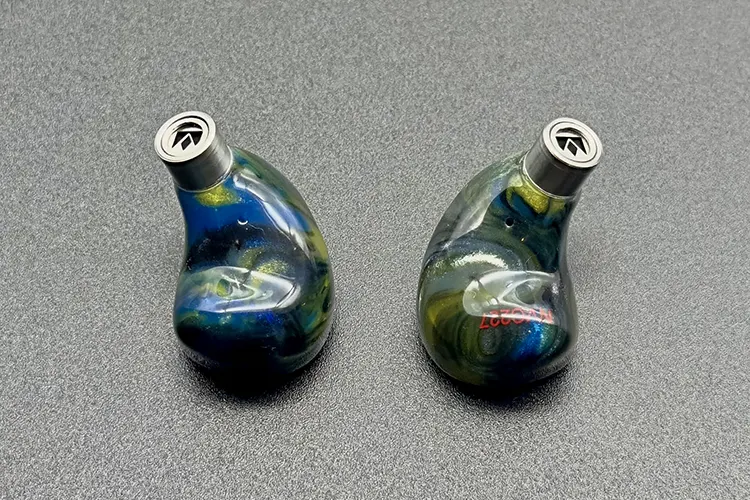

Comfort & Isolation
Fit and comfort are where Van Gogh surprised me, in a good way. Lately, I keep running into bulky shells. This one is small, and it feels like a relief.
The shape is simple and ergonomic, so it settles into the ear without any drama. The inner side of the shells is smoothly curved. There are no sharp edges or pressure points on the concha, just a clean seal.
The smaller footprint helps if you have narrow ear canals or get fatigued by big IEMs. I can wear these for long sessions and forget they are there.
The nozzle is average in length and width, not chunky or very small, which makes ear tip rolling easy. I rolled through different ear tips, and each snapped on without a wrestling match. With the right bore, the shell tucked a millimetre deeper and basically disappeared.
Stability turned out better than I expected from something this small and light. Walking around, tilting the head, or even a quick jog to the door, they stay put.
Isolation is better than I expected, and once fitted properly, ambient noise drops to a murmur, so I do not feel the need to crank up the volume.
The Van Gogh is ideal for your long-duration sessions. No sweaty hotspots, no odd pressure buildup, and no “relief sigh” when they finally leave your head.
Overall, I have zero complaints about the fit. If you’ve been bruised by the recent arms race of 12-driver thick-‘bois’, the Van Gogh feels like a palate cleanser.
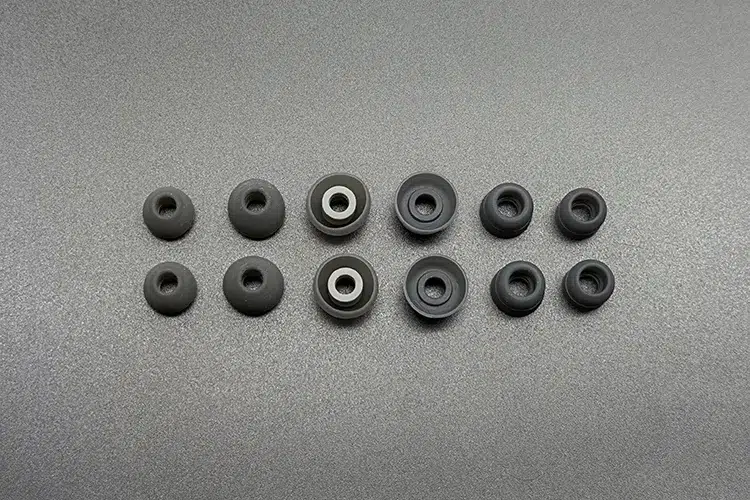

Ear Tips
Van Gogh is shipped with two different sets of silicone ear tips: one regular type and the other with a double-flange build. These come in three sizes: S, M, and L. Both sets are grey and have a nice build.
I use the regular type, as the double-flange tips are quite wide and have shorter stems that do not fit me well.
Given the regular nozzle size on the Van Gogh, you should not find it fussy with most ear tips. I use the L size, as the small IEM shells pair well with it for me. I struggle a lot with smaller nozzles; thankfully, it’s not the case with Van Gogh.
Other than the stock tips, I also paired it with the Divinus Velvets and the AZLA SednaEarfit Light ear tips, both work really well.
I prefer ear tips with slightly wider bores, so the highs are not restricted, and the bass feels balanced. I did notice a bit of pressure buildup when the tips are too tight, so watch out for that.
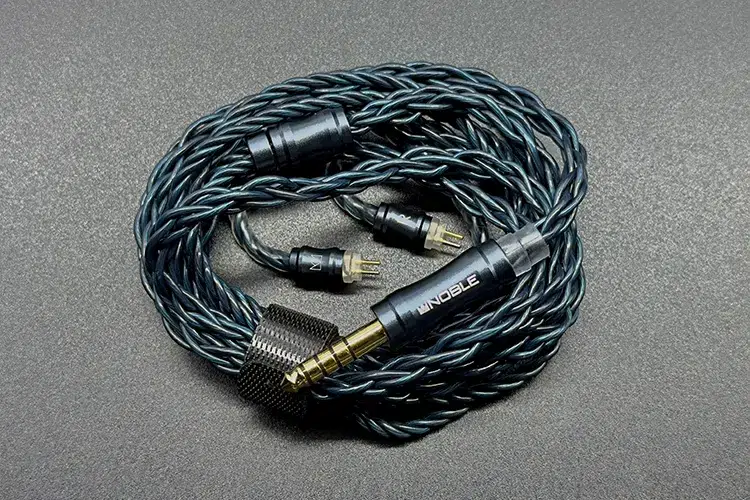

Stock Cable
The Van Gogh ships with Noble’s 8-core OCC copper cable, fitted with a 4.4mm balanced plug as default. This stock cable looks purpose-built and clean. It is a 4-wire, neatly braided cable without any visible gaps.
The outer sleeve has a smoky blue-grey tint that pairs nicely with the Van Gogh shells and gives the braid some depth under light.
Hardware matches the aesthetic. The straight 4.4 mm plug has a regular size and uses a black metallic barrel with the NOBLE logo.
Up the line, the Y-split is a matching metal barrel with the crown logo. The 0.78 mm 2-pin connectors sit in similar grey housings, again with the crown logo, and feel snug and secure.
Over-ear hooks are soft and adaptable, so the cable naturally wraps around the ear without any fuss. Flex is good, memory is low, and microphonics are minimal when worn over the ear.
The handling is easy, and it does not need frequent adjustments. It coils neatly, maintains its form, and does not spring back.
Overall, it is a comfortable cable with a subtle color scheme that complements the IEMs and does not let you worry much about cable rolling.


Packaging & Accessories
Opening the Noble Audio Van Gogh feels like unwrapping a limited art print. The sleeve looks as if fresh oil paint was pressed onto a canvas.
The sleeve has globs of blue, yellow, and green smeared around, aligning with the theme of Van Gogh’s Starry Night painting. Artistic, messy, and vibrant.
Sliding this sleeve off, you find a matte black box that opens sideways from the middle. Lift the lid and everything is laid out neatly with “Van Gogh” printed in white. The earpieces sit in snug foam cutouts. The shells are glossy and catch light like wet paint.
The cable comes pre-attached. It is a dark braided one, wrapped tidily in a small box hidden under the cutout. The whole tray looks deliberate and premium without trying too hard.
Inside the box, which is hidden under the main layer, you’d find the extras. A soft velvet pouch for quick carry, an ear tips kit with multiple silicone sizes packed in a small hard case, a Noble Audio logo sticker, and a cleaning brush are the accessories you get with the Van Gogh.
This is minimal yet thoughtful packaging. I would not say it’s the most premium at this price range, but the color play elevates the experience. Simple, tasteful, and very Noble.
I do miss a carry case here, as at this price point, it should have been included. A pouch does not cut it, as it cannot give the protection you’d need.
Sound Impressions
The following sound impressions of the Noble Audio Van Gogh were completed using a mixture of my main source, the Lotoo PAW Gold Touch, the Questyle CMA18P, and the Campfire Audio Relay dongle Dac/Amp.
For the review, I paired the IEMs with the stock cable and stock regular silicon ear tips, size L.
Summary
The Van Gogh surprised me in a good way. The tiny shells don’t hint at what it can do.
Bass hits like thunder, quick and heavy, yet it never drowns the mix. The midrange stays natural with a good amount of warmth. Resolution lands right where it should.
Even with the strong low end, the mids and highs stay clean and tidy. That balance is the win here. Treble has enough bite and air. It gets a little boost but remains just smooth and natural and resolves well. Details slip through easily and open up the sound.
On the technical side, the stage feels immersive and a bit intimate. The width is modest, which fits this kind of bass-forward tuning.
Imaging is not very precise, but placement feels sure. The IEM goes well with most genres. In short, if you want the gut punch without the muddy aftertaste, this tuning delivers.
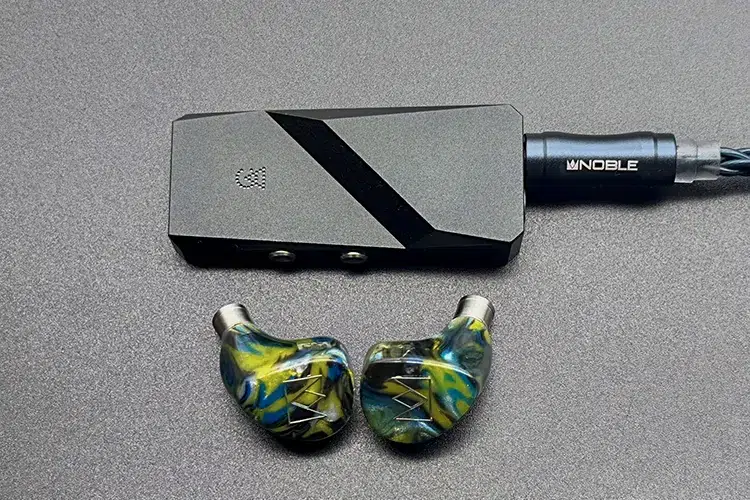

Bass
I never expected this pocket-sized shell to pack the kind of bass it does, yet the low end is the star of Van Gogh’s tuning.
The low end is tuned impressively well. It punches in on demand, hits with thunder-like weight, and still never drowns the rest of the spectrum. Control is high.
The bass has a slight warmth and offers a good level of detail. It isn’t the best bass I’ve ever heard in this price range, but that isn’t the brief here; the fun and excitement are.
Sub-bass digs deep and delivers real rumbles. On regular tracks, it does not intrude, yet you still get those little tickling sub-bass moments that add a layer of fun and excitement.
The mid-bass is thankfully well controlled. If it were any more, it would crowd the upper ranges. As is, it has a solid impact, and the balance feels spot-on.
Layering is handled nicely. When bass comes from multiple sources, it does not thicken the mix. It stays clean and separated. Many bass-heavy IEMs add bloom. This one rarely does, unless the track itself is loaded with bass.
Finally, that slight warmth gives the low end an easy-going nature. The bass does not feel dry or forced, just a smooth cushion that invites long listening sessions without fatigue.
Midrange
Midrange is an interesting one. The Van Gough mids are not very recessed, which I expected at first, given the bass and nature of the tuning. Instead, the midrange sits clearly in the mix, with vocals floating right in the middle, which neither feels too forward nor pushed back.
The tone feels natural, with a good dose of warmth and an authentic timbre. It is lush and rich without going overboard. Notes carry detail and a little trail of sweetness.
Lower mids carry real meat. It has a full-bodied presence, giving guitars, cellos, and male vocals proper weight. Thankfully, it is not too warm or bloated, thanks to the controlled bass.
Some micro details and tiny nuances are less pronounced, which suits this tuning. They are present, just not poking at your ears.
The upper mids are slightly focused. Do not expect extra bite or sharpness, but there is a mild forwardness that extends instruments well and makes female vocals sound lifelike.
It keeps the overall tonality clean. There is a seamless handoff to the treble region, giving a very coherent sound.
One thing I noticed: at low volumes, the Van Gogh midrange feels a bit shy, so you may need to nudge the volume dial for them to fully open.
The midrange tonality and timbre of the Van Gogh meet expectations. A few things fall short here and there, but nothing that screams “missing.” Overall, it’s an easy-to-love midrange.


Treble
The Van Gogh treble plays a supporting role and stays locked in with the midrange, coming across as one well-integrated unit. It is slightly boosted naturally with no sharp peaks, so it never sounds forced.
Energy stays intact, and details come through enough to keep things engaging, with nothing important missing. Some tiny nuances can feel a bit muted, but not by much.
There is a good dose of air and sparkle that keeps the Van Gogh from drifting into a dark territory and gives the sound a gentle glow.
The lower treble is a touch relaxed. It keeps sibilance in check and stops the upper mids from getting hot. The upper treble picks up some energy and adds shimmer. Transients are crisp, with clear edges that help separate busy mixes.
There is enough air to open the stage and stop the tuning from sounding closed in. Extension is good rather than endless, and the very finest sparkles are slightly softened, which helps for long listening.
Overall, Van Gogh’s detail retrieval is good. Micro-detail is present but not pushed at you. On treble-heavy tracks, notes can sometimes smear together and lose separation. The treble brings air and light, keeps the rhythm nimble, and balances the strong low end without causing fatigue.
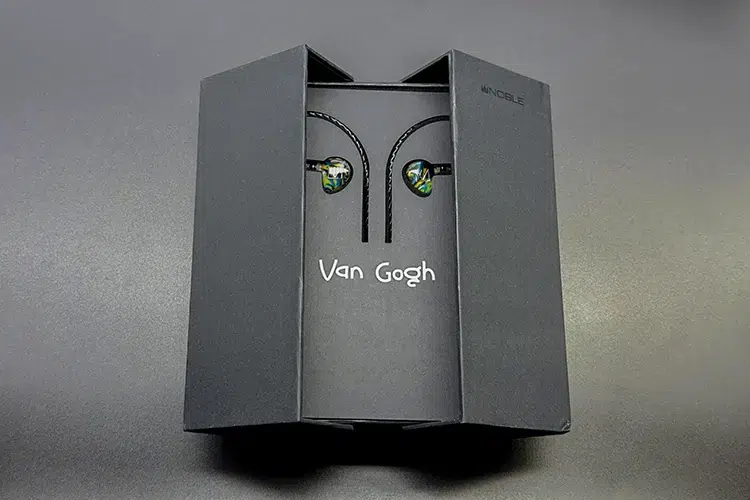

Staging & Dynamics
The technicalities of Van Gogh aren’t razor-sharp. The stage is a little narrow in width, but depth and height feel good. It’s immersive enough to keep you engaged.
The other good news: layering lands right on most tracks. Even on faster, busier mixes, it holds together, and you don’t feel any congestion. Imaging is good enough; it’s not pinpoint sharp, but instruments sit where you expect them.
Overall, the stage feels tidy and well-structured. It makes decent use of depth, keeps instruments spaced without that cramped, suffocated feel, and left-right movements track accurately.
Resolution is about right for a bass-heavy tuning. The big, heavy-hitting sounds such as kick, bass lines, snare impact, and lead vocals come through first.
The tiny stuff hides a bit. Some nuances and micro details don’t announce themselves unless you listen hard. That seems intentional; this tuning isn’t trying to spotlight every last detail. Nothing critical is missing; it just feels a bit relaxed.
So, macro over micro: slam, body, and outline are more present, while the finest textures and faintest cues take a step back. If you’re chasing microscope-level detail, this won’t scratch that itch. If you want a clean structure with weight and drive, it does the job well.
Click on page 2 below for my recommended pairings and selected comparisons.

